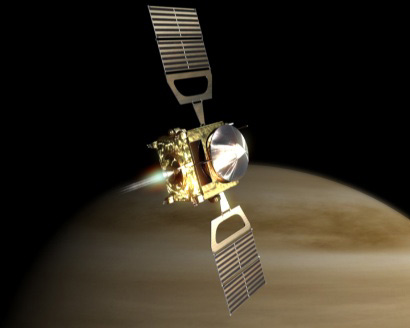Well, it’s been quite the week for solar system exploration!
As I write this, the European spacecraft Venus Express is just three hours away from starting up the maneuvers it needs to enter orbit around Venus. If all goes well, at 01:07 Pacific time (08:07 Universal or Greenwich time) on April 11, the first spacecraft since Magellan will become a moon of the otherwise moonless planet.
As usual with planetary stuff, the best place to get info is Emily Lackdawalla’s Planetary Society Blog. She has a timeline there, and lots more about the spacecraft and its mission. You can also poke around The Nine Planets website for more too.
I’ll note that this mission is heavily designed to study Venus’s weird atmosphere. You’ve probably heard about it before: 90 times the Earth’s pressure, flaming hot due to a runaway greenhouse effect, sulphuric acid rain, no water. Weird hardly begins to describe it.
But I’ll leave you with this: if you are an early riser, go outside tomorrow morning and face just south of east. See that incredibly bright star, low in the sky? That’s it. That’s Venus. It’s almost exactly the same size as Earth, but enshrouded in clouds, making it highly reflective. So even at its current distance of 120 million kilometers, it’s the third brightest star in the sky.
120 million kilometers. And our grasp has once again reached out across the sky to touch another small piece of the Universe.’
